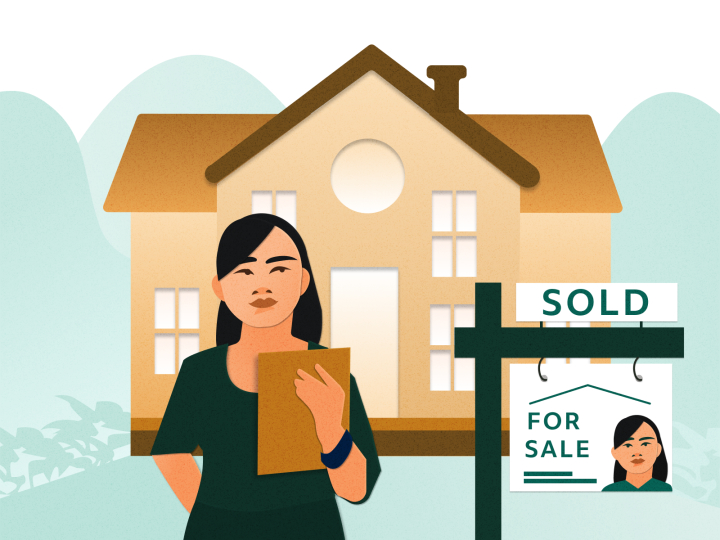The Future of Realty: Patterns and Opportunities to See
As the real estate landscape progresses, it ends up being significantly crucial to understand the emerging fads and possibilities that will certainly define the industry in the coming years. With these characteristics at play, a closer exam of the methods and adjustments essential for success reveals appealing possibilities that could reshape financial investment approaches and market behaviors.
Technological Advancements in Property
In current years, the real estate field has welcomed a wave of technological developments that are transforming standard techniques. One of the most notable advancements is the increase of large data analytics, which allows real estate experts to examine market trends, forecast residential or commercial property worths, and determine financial investment chances with unprecedented accuracy.
In addition, digital reality (VIRTUAL REALITY) and enhanced reality (AR) innovations are changing home advertising by supplying immersive experiences for prospective customers and occupants. These devices enable clients to conduct virtual tours of residential properties, thus streamlining the search procedure and boosting customer involvement. Moreover, blockchain modern technology is acquiring traction as a way to secure deals and maintain transparent records, thereby decreasing fraudulence and expediting the closing process.
Smart home modern technologies are additionally becoming progressively widespread, allowing house owners to check and manage their residential or commercial properties remotely (Real Estate Lockhart). Collectively, these technical advancements are reshaping the landscape of genuine estate, promoting an extra reliable, clear, and customer-centric market
Demand for Lasting Properties
As consumers increasingly prioritize environmental responsibility, the need for lasting residential or commercial properties has surged in the genuine estate market. This change shows a more comprehensive societal trend towards sustainability, with buyers and financiers looking for residential properties that decrease environmental effect while optimizing energy performance. Features such as photovoltaic panels, energy-efficient appliances, and lasting structure materials are currently considered as essential instead of optional.

Additionally, the surge of eco-friendly areas, which prioritize walkability and access to public transport, even more emphasizes this fad. These growths interest eco mindful buyers and promote a healthier lifestyle.
As the need for sustainable residential or commercial properties proceeds to climb, industry stakeholders must adjust to these assumptions. By welcoming cutting-edge practices and prioritizing sustainability, the realty sector can not only fulfill customer demand yet likewise add to an extra sustainable future.
Changing Customer Demographics

Furthermore, the aging population is improving need for housing. Baby boomers are seeking downsized residences that supply availability and low maintenance, usually preferring urban settings with neighboring features. This change necessitates a focus on multi-generational real estate options that suit varying needs.
Furthermore, social diversity is playing an essential duty in realty patterns. Buyers from various histories bring distinctive choices and expectations, motivating programmers to develop comprehensive atmospheres that cater to a larger audience. As these market shifts remain to develop, property specialists must adjust their strategies to address the demands of these diverse customers. Comprehending these transforming demographics will be critical in determining crafting and arising chances tailored advertising methods that reverberate with the varied demands these days's market.
Surge of Remote Work Influence
Progressively, the increase of remote job is transforming the real estate landscape, triggering considerable changes in purchaser preferences and location choices. As employees take pleasure in the adaptability of working from home, many are reviewing their residential needs, leading to a rise in need for properties in suv and rural locations. This pattern is largely driven by the desire for even more spacious living atmospheres that can suit home workplaces and a better lifestyle.
Additionally, metropolitan facilities, once the focal point for customers, are observing a progressive decline popular as individuals prioritize cost and accessibility to nature. As a result, realty developers and capitalists are shifting their focus toward buildings that supply home office areas, outside amenities, and distance to vital services.
Genuine estate specialists have to adjust to the altering preferences of customers, highlighting the value check this of way of living variables in their marketing techniques. The implications of remote job on genuine estate are profound, shaping future fads and possibilities.
Financial Investment Opportunities in Emerging Markets
Financial investment possibilities in arising markets are continually standing out from investor looking for diversity and growth potential. These markets, characterized by quick financial advancement, boosting urbanization, and an expanding middle course, present special prospects for savvy capitalists. Countries in Southeast Asia, Africa, and Latin America are experiencing significant facilities renovations and positive government plans, which additionally boost their charm.
Actual estate fields such as domestic, industrial, and logistics are experiencing increased need due to city movement and developing consumer preferences. Especially, cities like Ho Chi Minh City, Nairobi, and Medellín are ending up being hotspots for financial investment because of their expanding economic situations and younger demographics.
Financiers ought to perform thorough market evaluations to determine vital patterns, such as changes basics in populace dynamics and financial stability, which can affect property worths. In addition, partnerships with local actual estate companies can help with effective entrance and navigating in these markets.
Nonetheless, it's crucial to be mindful of possible threats, consisting of political instability and regulatory obstacles. By evaluating these elements and taking on a long-lasting point of view, capitalists can efficiently maximize the profitable opportunities emerging in these developing regions.

Conclusion
Finally, the future of realty will be significantly affected by technological improvements, a growing emphasis on sustainability, and developing customer demographics. The rise of remote work is reshaping housing preferences, particularly in suburbs. Furthermore, emerging markets present substantial investment chances for stakeholders ready to adjust to these adjustments. Browsing this changing landscape will need tactical partnerships and an eager understanding of market dynamics to profit from the fads forming the sector.
As the genuine estate landscape progresses, it comes to be increasingly vital to recognize the emerging fads and possibilities that will certainly specify the sector in the coming years. One of the most significant developments is the surge of big information analytics, which permits actual estate experts to assess market fads, predict building values, and recognize financial investment opportunities with extraordinary precision.As customers progressively prioritize environmental obligation, the demand for sustainable buildings has actually risen in the genuine estate market. The ramifications of remote work on actual estate are extensive, forming future fads and opportunities.
Financial investment chances in emerging markets are continually drawing in focus from actual estate investors looking for diversity and development potential.